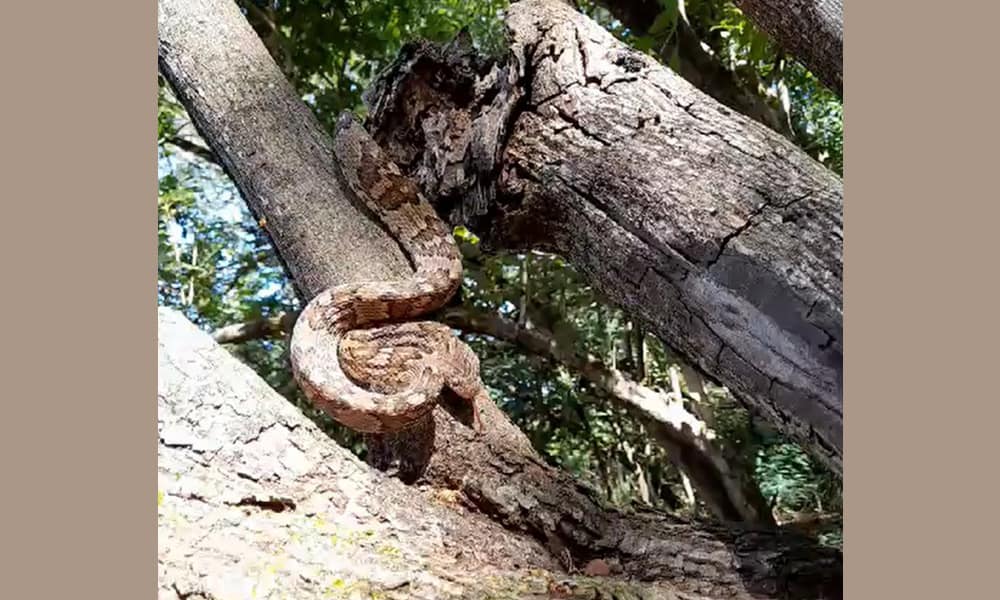Which medium-sized to large snake has a slightly compressed body, large eyes with vertically elliptical pupils, and loves to show up in my backyard? You guessed it, the Central American lyre snake.
The Central American lyre snake (Trimorphodon quadruplex) is known as the culebra lira or toboba gata in Spanish. The English name comes from the v-shaped or lyre-shaped markings on the top of its head. (For those of us unsure of the definition of lyre, I just looked it up. It’s u-shaped string instrument.)
Lyre snakes live in the Pacific northwest region of Costa Rica because they predominantly live in dry areas. They are nocturnal and can sometimes be spotted crossing the road in front of your car at night. They are tolerant of habitat alteration and have no problem living around humans, sometimes entering homes or outbuildings looking for prey.
These snakes have a mild venom which is administered via enlarged rear fangs. They use this venom to subdue smaller prey items like lizards, small mammals, birds, and bats. For larger prey items, like adult green iguanas, the venom isn’t strong enough to do the job, so they rely on constriction.
Lyre snakes are oviparous which is a fancy way of saying that they lay eggs. They produce clutches of up to twenty eggs which they lay during the rainy season. The eggs hatch during the dry season, perhaps to coincide with a higher density of lizards.
Since lyre snakes are one of the more common species of snakes in Guanacaste, I’ve had several run ins with them over the years. The first time I heard of a toboba gata was shortly after moving to the Pacific coast. A friend was raking leaves when she accidentally raked a snake onto the top of her sandaled-foot and received a bite. Though the venom is known as weak, and my Costa Rica reptiles book says it has ‘no deleterious effect on humans,’ she felt faint and generally unwell enough to require a trip to the local hospital.
More recently, over a span of a couple of months, I removed four or five different lyre snakes from my backyard where I’d find them hiding under my kids’ toys, gardening tools, you name it. It became common enough that I had to actually take a minute to consider the sudden up-tick of mildly venoms snakes in the area where my kids like to hangout. It turned out it was my fault. The bubble-thing on a stick which was inside of the water tank in my backyard was broken.
Without this little device that usually stopped water from entering the tank when it was full, the tank was consistently overflowing, creating a constant puddle. Frogs enjoy constant puddles and lyre snakes enjoy frogs. As soon as I finally heeded my wife’s advice to fix the tank, the puddles stopped, the frogs left, and the snakes stopped coming.
I have yet to record a lyre snake on my camera traps, but I do have a video clip to share. About a year ago, a security guard from one of the properties I have cameras on handed me a burlap bag with a boa constrictor in it and asked me to release it off of the property.
I took the bag to a patch of forest far from people and when I dumped it out, the boa turned out to be a lyre snake. I shot a quick video because I thought it was pretty and now, I’m sharing it with you.
About the Author
Vincent Losasso, founder of Guanacaste Wildlife Monitoring, is a biologist who works with camera traps throughout Costa Rica. Learn more about his projects on facebook or instagram. You can also email him at: vincent@guanacastewildlifemonitoring.com







